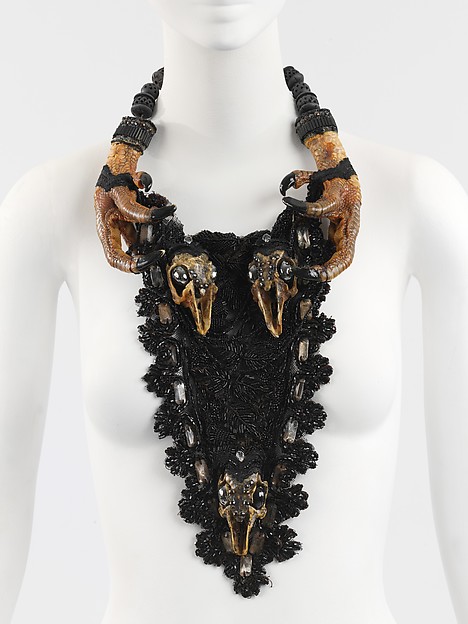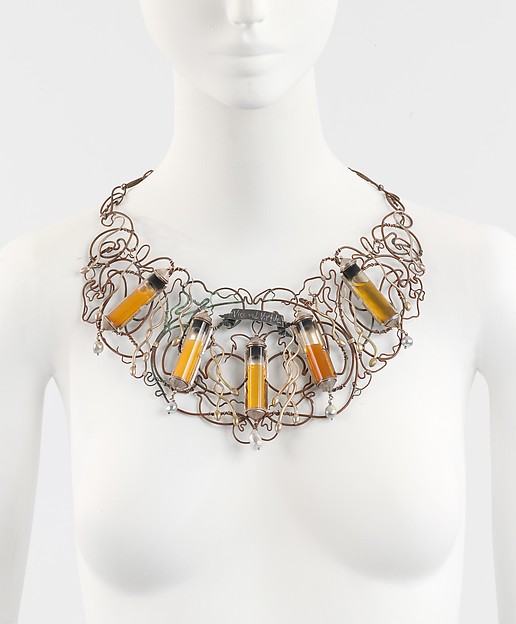This year’s STASH Flash session featured a whopping fourteen speakers, divided by subject into three groups. To do them all justice is almost impossible — it was really a fantastic session! — but here is my best attempt.

True to the theme of the annual meeting, the first set of talks focused on storage solutions for emergencies, beginning with Kelly O’Neill who presented on a mobile storage rack for paintings. As conservators at ArtCare, Miami, O’Neil and her colleagues must be prepared for severe weather. With this in mind, they worked with a carpenter to design a moveable rack made of marine plywood and reinforced PVC piping, with vinyl flooring and large wheels. A sailmaker was commissioned to create a custom cover with zippered sides and button snaps at the base, using Sunbrella cloth. The completed rack measured 105” x 114”, with the depth ranging from 43 to 93”; this was dictated by the space available in the studio.
Nichole Doub from the Maryland Archaeological Conservation Laboratory suggested folding frame tanks (such as those sold by Husky) as storage for waterlogged wooden objects. She also recommended the use of tank liners (Flexiliner has a chemist on staff who can advise in the case of solvent use) as well as above-ground swimming pools, which can be hooked up to the conservation lab’s own filters.
Ashley McGrew from Stanford University recommended the use of nylon mesh and webbing fixed with fast release clips to create user-friendly, flexible, and affordable restraints to protect objects during earthquakes.
The next group of presenters discussed solutions that were large in scale and scope, beginning with Alicia Ghadban, who discussed the implementation of the RE-ORG methodology at a workshop at the WuHou Shrine Museum in China. The workshop focused on a storage room on the third floor, where objects were stored on the floor, limiting access. During the reorganization, most objects were removed from the room, allowing the installation of compact shelving. Materials were reused wherever possible, and objects were housed by size and type. Additional information about RE-ORG is available here.
Gretchen Anderson from the Carnegie Museum of Natural History followed with a way to protect type collections for archeology: she made a lid with a window in it using archival board and polyester film, protecting objects from dust while allowing them to remain visible. Meanwhile, her colleague, Leslie Haines, suggested an alternative to plastic sheeting for building dust covers for large objects: they now use Tyvek, which is draped over a support made of PVC piping. The support is basically a cube made of piping (the bottom framework is important for stability) and can incorporate a Coroplast panel on top to protect the object from water. Cotton ties can be sewn to the Tyvek to help hold it closed, and images of the object can be fixed to the exterior for easy identification.
Erika Range then discussed a recent survey at the Canadian Museum of Nature that developed guidelines and decision trees to use in identifying appropriate labeling materials for use in natural history collections. I was hoping these would be available online, but could not find them; hopefully they will be made available to the wider conservation community soon.
The last segment of the session dealt with multipurpose solutions, beginning with Sanchita Balachandran of the Johns Hopkins Archaeological Museum, who presented on the rehousing of small robust archeological objects to facilitate their safe use in classrooms. She and her colleagues developed a repeatable, modular, searchable, and useable solution that could be implemented by student workers. Details on the solution are available here .
Emily Wroczynski followed with a presentation on creating clamshell boxes for oyster shells with rare earth magnet closures. Then, Kesha Talbert described the creation of mounts for the display and storage of handheld fans at the Colonial Williamsburg Foundation. These custom mounts were made with matboard covered with suede polyethylene, and step by step instructions are available here.
Stephanie Gowler described the problems inherent in displaying and storing items from the archive of performance artist Charlotte Moorman. Mounts needed to be almost invisible, which Gowler and her colleagues achieved by the use of Tycore and Volara panels with Ethafoam and Volara supports. Objects were sewn onto the panels with monofilament and linen thread, and the whole was housed in custom boxes from Talas. Quilts of Hollytex and polyester batting were used to minimize vibration. A great blog-post detailing the process is available here.
The session came to a close with two presentations on the housing of (relatively) flat materials. William Bennett, from the Smithsonian Institution Archives, presented on his creation of a custom pieced housing for a fragile early gelatin print using a magnetic overmat that allowed the photograph to be easily removed if necessary. Liz Peirce’s presentation on the rehousing of a collection of thin wood samples in four-flap boxes that are themselves housed in a clamshell box.
For further information, you can access the abstracts of all the presenters here. Presentations will also be posted on the STASH site.
Tag: AIC’s 44th Annual Meeting
Joint 44th AIC Annual Meeting and 42nd CAC-ACCR Conference – Objects Session, May 17, "Facing the Past for Action in the Future: Cultural Survival in Native America", by Kelly McHugh
The official theme of the joint 44th AIC Annual Meeting and 42nd CAC-ACCR Conference was “Emergency! Preparing for Disasters and Confronting the Unexpected in Conservation”, however, a series of talks diverged from the theme, discussing instead the role of the conservation profession in supporting social inequality and established colonial structures: Kelly McHugh’s was one such dark horse.
She began her talk with the disclaimer that her talk would contain much self-reflection. This proved a successful approach to a difficult topic, the marginalization of Native Americans within the United States of America (Canada’s crimes against First Nations groups were not addressed). By expressing her position within the framework of her own experiences, McHugh made her message approachable, sharing blame in the problems she brought to light. As McHugh noted, conversations on reconciliation can be difficult as they bring up paralyzing feelings of discomfort, anxiety, and guilt. She stressed that in addressing injustices, it may feel to Americans that the legitimacy of the origin myth of the USA as the Land of the Free is undermined – an idea expressed by Walter Echo-Hawk in his book, “In the Light of Justice”.

McHugh began by discussing Tellico Lake, TN where she and her family vacation. Until recently she was unaware that the lake, created as a result of the construction of the Tellico dam, covered two sacred Cherokee sites, Chota and Tanasi. The construction of the dam, which was delayed for years due to an endangered fish called the snail darter, was not hindered at all by the sacred status of the sites, which were later commemorated through the naming of golf courses and the creation of a lakeside memorial. Tying her talk into the overarching conference theme, McHugh pointed to the irony of those responsible memorializing destroyed sites lost through an intentional, man-made disaster. McHugh went on to emphasize the significance of her own ignorance of Chota and Tanasi as symptomatic of the societal blindness to aboriginal issues, which was particularly uncomfortable for her after 19 years of employment at the National Museum of the American Indian.

She then directed the audience’s attention to other sacred Native sites harmed in the interest of industry and tourism. She addressed the inadequacies of the American Indian Religious Freedom Act of 1978 and the National Historic Preservation Act of 1966, even noting that the Native American Graves Protection and Repatriation Act of 1990 fails to give First Nations tribes the right to completely barre all disturbance of sacred sites. She highlighted one location successfully protected from development for an army training facility, Medicine Bluff, which was done so by culturally educating the judge in the case, by inviting him to the site and having him walk with a religious leader. She also cited current threats to Native American heritage, notably encroaching sea levels from climate, requiring the displacement of tribal villages.

Stressing the inherent connection between human rights and authority over cultural patrimony, McHugh showed the importance of generating awareness of these issues all the while not separating Native history from our own. McHugh called for true collaboration between museums and native communities, noting that NMAI was getting closer to such a relationship and highlighting other significant organizations like the School for Advanced Research and the Association of Tribal Archives, Libraries, and Museums. She suggested the use of listening sessions and the creation of collaborative collections care initiatives to allow for sharing in the responsibilities of problem-solving on equal ground.
Overall, the message McHugh delivered was an important one – that as conservators we need to do more to recognize and respect the essential connection between cultural heritage and community, that we cannot ignore the human element in favour of remaining a neutral observer to the struggle for recognition of human rights for First Nations peoples. There is no neutral position, inaction and ignorance only support the inequality founded on colonialism and racism. McHugh gave an important call to action: true collaboration or bust!
Joint 44th AIC Annual Meeting and 42nd CAC-ACCR Conference – Textile Session, May 16, "Vial Things: Preserving the Unexpected in the Occult Jewelry of Simon Costin", by Sarah Scaturro
To say Sarah Scaturro had me at “semen” is both entirely accurate and the oddest phrase I have ever put to virtual paper. To be precise, she had my interest at “Vials of evaporating semen…”, the jaw-dropping opener to her abstract, and she held it for her entire talk on the conservation of jewelry by Simon Costin contained within the Metropolitan Museum of Art’s Costume Institute collection.
The two necklaces of discussion were Memento Mori, made by Costin in 1986, and Incubus, made in 1987. Both presented unique preservation problems not frequently encountered by textile conservators. Faced with unfamiliar challenges, Scaturro sought first to better understand the mechanisms of degradation affecting the necklaces: this involved conducting artist interviews and consulting alternatives resources on taxidermy and liquid-preserved specimens.

In the case of Memento Mori, the turkey feet and rabbit skulls, incorporated into the necklace’s design, had begun to degrade due to insufficient preparation methods. The fats contained within the skin of the turkey feet had oxidized leading to a rancid odor – a smell all too familiar to me having recently completed the degreasing of beluga whale jawbones. The oxidized fats were also pooling at the surface of the feet, risking degradation of the neighboring necklace elements. The rabbit skulls, which retained some bits of flesh and hair, suffered from discoloration and mold, negatively impacting the artist’s intended aesthetics. Swabbing with ethanol proved to be the solution for both of Memento Mori’s problems – ethanol was used to degrease the surface of the turkey feet while it also acted as a biocide, killing the mold on the rabbit skulls, in addition to reducing the discoloration. Scaturro also employed preventive strategies which included the use of barriers to prevent transfer of the turkey fats to other parts of the necklace and anoxia to slow the oxidation of the fats.
The treatment of Incubus, the inspiration for the talk’s title and my grim interest, was still in progress at the time of Scaturro’s talk. The necklace, which resulted in a charge of indecency for the artist at the time of its unveiling, contains 5 vials of semen, one donation having been made by the artist himself. Over the past 30 years, the semen has discolored and partially evaporated – how best to address this issue, Scaturro was undecided. She raised two amusing points while discussing her research into the degradation mechanisms of Incubus: one, there is little information available on how semen degrades over thirty years; and two, it would be interesting to understand what elements of the five donations were responsible for the variations in color and evaporation rate.

Her first steps to the treatment of Incubus involved the creation of permanent upright storage for the necklace, thereby avoiding contact between the rubber stoppers on the vials and their contents. Scaturro made note that storage and display at a consistent temperature (as opposed to cold storage and room temperature display) was best practice for slowing the evaporation of the semen. She was also considering applying cyclododecane to improve the seal of the vials – the benefit of cyclododecane wax being its gradual sublimation at room temperature, making it possible to display the necklace without wax coatings affecting the aesthetics.
Scaturro concluded by noting that further interviews with Simon Costin were planned with the hopes that he might be able to offer direction as to the refilling or not of the vials of semen.
Overall, Scaturro handled the unusual topic with professionalism, inciting only minimal nervous giggling. The talk provided a window into the extremes of art and art conservation, and offered an example of how to approach the even the most macabre of objects.
44th Annual Meeting, Textile Session, May 15, "The Creation of a Digitally Printed Reproduction Sleeve for and Eighteenth-Century Painted Silk Dress", by Miriam Murphy and Alexandra Barlow
When I heard the title of this talk, I must admit images of laser scanners and super computers came to mind. And while the technology is doubtlessly impressive, I was relieved to learn that it is far more accessible (and much less sci-fi-esque!) than I had originally imagined.
The dress at the center of this talk was a silk taffeta Robe à la Polonaise, circa 1780, that had been donated to the Metropolitan Museum of Art in 1976, sans one proper left sleeve.

Because the silk was hand painted, the best option for recreating it in the 1970s was to hand paint a new sleeve as well. However, after four decades, and three exhibits, the reproduction had become damaged. Before being featured in the 2015 show China: Through the Looking Glass, it was decided a new sleeve would have to be made. For the 2004 show, Dangerous Liaisons: Fashion and Furniture in the Eighteenth Century, an entire reproduction petticoat had been digitally printed, so it was not a technology with which the Met was unfamiliar. Digital printing has also, in recent years, been used to create fabric for mounts, upholstery for chairs, and a dress for a historical interpreter at Colonial Williamsburg.
The first step in the process was to get a good digital image of the fabric, ideally through scanning. As luck would have it (or so they thought) a flat pattern piece of the same fabric was at the Cooper-Hewitt, Smithsonian Design Museum. Unfortunately, it was soon discovered that there were subtle but definite differences between the two. Because of the 3-D nature of the dress, scanning was not an option, so digital photography had to be used instead. The petticoat was selected for this process, rather than the present sleeve, because it offered a large, flat expanse, and the majority of the pattern repeat. The image was taken at the Met’s photography lab and sent to Dyenamix textile printing, for image manipulation. This proved more difficult than expected because the undulations of the petticoat, visible in the photograph, had to be removed, and the full pattern repeat stitched together. Another stumbling block was what part of the repeat to print? Should they go with a mirror image of the extant sleeve, or could it be assumed that such expensive fabric was used conservatively, without an attempt at symmetry? Ultimately, the former path was selected.
The next step was to find a suitable base fabric. Although the fabric texture can be printed, the best results are achieved when a close match is found, which was a challenge since 18th century taffeta was finer than that available today. When a good approximation was sourced (from Manhattan’s Garment District), both white and ivory was purchased. Dyenamix first sent the fabric to Jacquard in California for pretreatment, to prepare it to accept the ink. When the fabric returned, it was ready for the printing process. The printer prints ¼” at a time, going over each section eight times.
It took many attempts and many weeks to get the colors exactly right. Most of the early attempts were too bright and saturated, qualities prized by industry clients, but not by conservators. Once the fabric was printed, a pattern was taken from measurements and multiple mock-ups were made before the final sleeve was constructed. All-in-all, the process took six weeks and $2,400 (not including the time of the Met staff) to complete. Interestingly, roughly half of that seems to have been because Dyenamix did the image manipulation, judging by a similar project done in the Met’s upholstery department.

Dyenamix had claimed that their inks were archival and because the dress needed to be ready for exhibition, no further tests were performed beforehand. However, after the exhibition closed, the fabric was given the Oddy test, which it failed. In response, the sleeve was removed from the dress and stored separately.
I would be interested to know what caused the sleeve to fail the Oddy test: was it the pretreatment done by Jacquard to ready the silk for the ink, or the ink itself? This process is a great tool for any conservator to have and (as always!) more research is desired!
